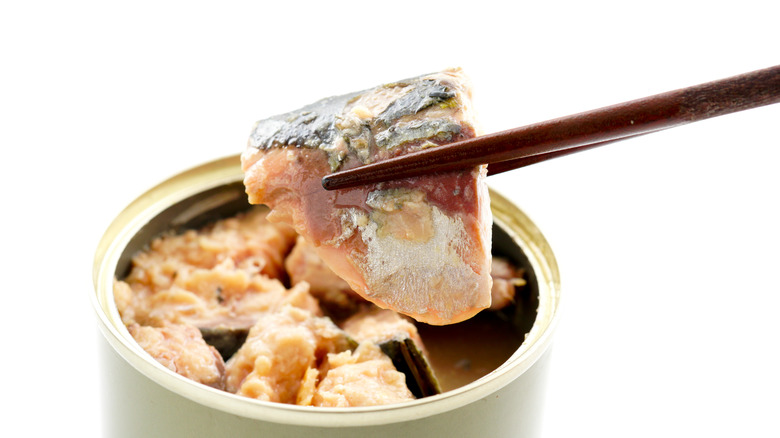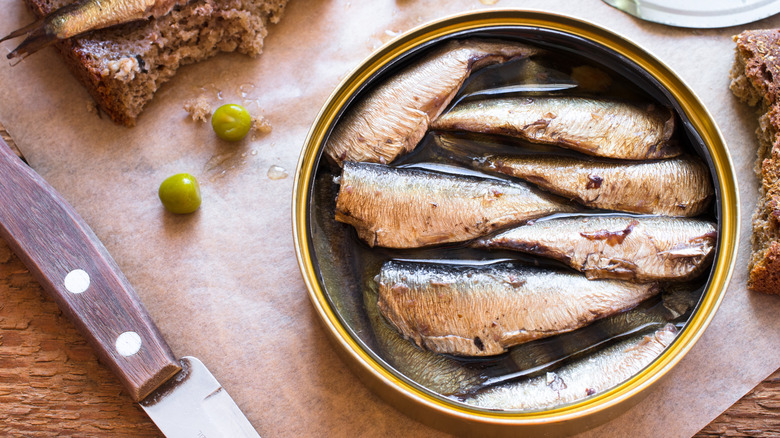Japan's Canned Seafood Industry Has Been Going Strong Since 1871
Few outings stimulate the senses and the imagination as much as a trip to your local fish market. But, if you can't buy your fish fresh, buy it canned, preferably from Japan. Remember those bland, uninspiring cans of baby corn and white hominy living in the back of your pantry? That's not what we're talking about here when we say canned food. Japanese manufacturers are cranking out high-quality, culinary-complete canned seafood selections like canned miso mackerel, soy sauce sauri, and miso sardines, per Umami Mart. According to Japanese retailer Takaski, there's even a line of canned luxury king crab meat that runs for $82 a can.
Canning has a history and enduring presence in countries around the world. Napoleon Bonaparte is largely to thank when it comes to the advent of safe and long-lasting canned food. In 1795, Napoleon offered 12,000 francs to anybody who could improve France's food preservation system in an effort to get food to his troops on the battlefield, per NPR. At that point, says History, the can opener wouldn't be invented for another 30 years, so infantry soldiers were hacking open their canned beans with chisels and bayonets.
Nordic tinned-fish foodies are enjoying things like surströmming (canned fermented herring), a Swedish delicacy and firmly in the running for the world's smelliest food, via Scandinavia Standard. But no one in the world does canned seafood quite like Japan. Here's why the country's industry has been going strong since 1871.
Japanese foodies can dig it
According to Japanese canned food retailer mr.kanso, Japan's first-ever canned food was created in Nagasaki in 1871 by Masanori Matsuda. It was an early version of the canned sardines packed in oil that folks purchase today. Shortly thereafter, in 1877, the Hokkaido Ishikari Canning Factory (the first canning factory in Japan) opened its doors. By October, it was manufacturing salmon, which is widely considered to be Japan's first canned product. Since 1958, says Takaski, Japanese canning company Hagoromo Foods Co. Ltd. has sold more than 10 billion cans of its Sea Chicken Tuna.
Today, Japan produces 67% of the total variety of canned goods in the world. And though Japanese grocery stores often have rarer to find canned local foods like muki soba and Hotei Nagoya Kohchin Yakitori, travel guide Japan Kuru says canned seafood is sold everywhere, from discount shops to gourmet food stores. Japanese foodies can even snag a can of fish from their local konbini while picking up a Korokke-pan for lunch.
If you're hungry to incorporate Japanese canned seafood into your recipes, stock a few cans in your pantry for easy meal fixes on busy weeknights. You can mix canned fish with a bit of kewpie mayo for fish salad sandwiches or try shaping canned salmon into salmon burger patties. If that's not your bag, simply add tinned fish to grain bowls, salads, and pasta for make-ahead lunches.

